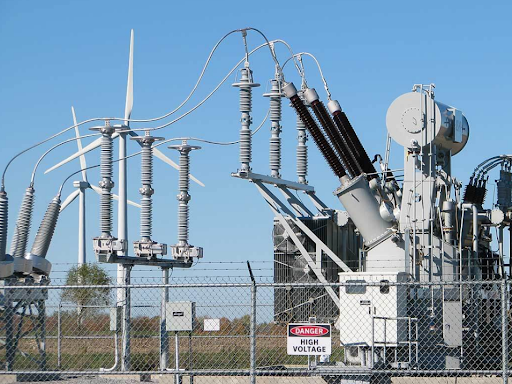
Surge arresters are protective devices that limit voltage by bypassing or discharging surge currents. They stop the flow of current from continuing to the ground. An arrester does not absorb or stop lightning; it protects equipment by limiting voltage, directing lightning, and diverting it.
Surge arresters are used in various places, from protecting homes to utility substations. They are employed on residential circuit breakers, transformers mounted on pads, pole-mounted transformers, riser poles with pole mounts, and utility substations.
The IEEE C62.11 standard and IEC 60099-4 standard define the regulations for surge arresters.
Quick links to surge arrester fundamentals: Use | Operation | Types | Learn more
Why Use a Surge Arrester?
Voltage surges can occur on distribution power lines, primarily caused by lightning. On average, the Earth’s surface experiences about 100 lightning strikes per second. Lightning is an unpredictable and random event.
Temporary overvoltages and switching surges are also sources of voltage surges. Switching surges, caused by changes in system operating conditions, are the primary voltage surge for station-class arresters. Switching surges involve trapping and subsequently releasing energy. Ground faults in one phase can cause temporary overvoltages. Voltages will rise on the unaffected phases until the faults are cleared.
Surge Arrester Operation
What is the Function of a Surge Arrester?
Surge arresters, containing a series of metal oxide varistor (MOV) blocks, function through a voltage-controlled switching device that acts as insulation with line voltage. The MOV blocks start conducting when the arrester voltage exceeds its reference voltage. Conduction stops when the MOV block voltage falls below the reference voltage due to its highly non-linear nature.
Why Do Arresters Operate?
Surge arresters must handle the power frequency voltage they operate at. They discharge transient energy in the system as current while preventing excessive voltage across protected equipment. They must operate in the same environment as the protected equipment. The Temporary Overvoltage (TOV) capability indicates the maximum overvoltage an arrester can endure without damage.
Arresters might be activated for several reasons:
– Prolonged TOV condition
– Undersized arrester
– Exceeded duty rating due to lightning surges
– Gap degradation in silicon carbide arresters
– Leaking silicone oil additive from oil-based polymer housing causing degradation
– Wildlife interference
– Disk aging
– Porcelain arresters can break after a life-ending event; polymer arresters might experience side blowout or disconnection from the ground.
Types of Surge Arresters
Secondary Arresters
Secondary arresters safeguard against secondary surges. Transformer failure rates range between 0.4% and 1%. Surges on the low side contribute to 50%-70% of transformer failures. Secondary surge protection, whether at home or service entrance, subjects the service transformer to additional surge duty. Using secondary arresters can significantly reduce transformer failure rates.
Distribution Arresters
Distribution arresters are rated from 1 to 36 kV. They are categorized as light duty, normal, and heavy duty. The riser pole functions as a heavy-duty arrestor. Transformers can also use distribution arresters, such as under-oil-mounted, elbow-mounted, or cubicle-mounted ones. The Evolution arrester is suitable for all overhead applications. Riser poles reduce voltage surges for underground cables and equipment. Open-point arresters prevent voltage doubling or surge reflection.
Intermediate Arresters
Intermediate arresters possess higher discharge voltages and high fault current resistance capabilities. They are available in ratings from 3 to 120 kV.
Station Class Arresters
Station class arresters have the best discharge voltages among all arresters. They offer the highest energy handling capability and the greatest fault current withstand ability. Ratings range from 3 to 684 kV. Station class arresters come in various cantilever strengths to meet even the most demanding applications.
This post was written by Justin Tidd, Director at https://www.swartzengineering.com. For nearly half a century, Swartz Engineering has been at the forefront of industry safety. They are a family-owned company specializing in power distribution for the electrical industry. Our design ensures maximum flexibility for excellent reliability and a high return on investment.